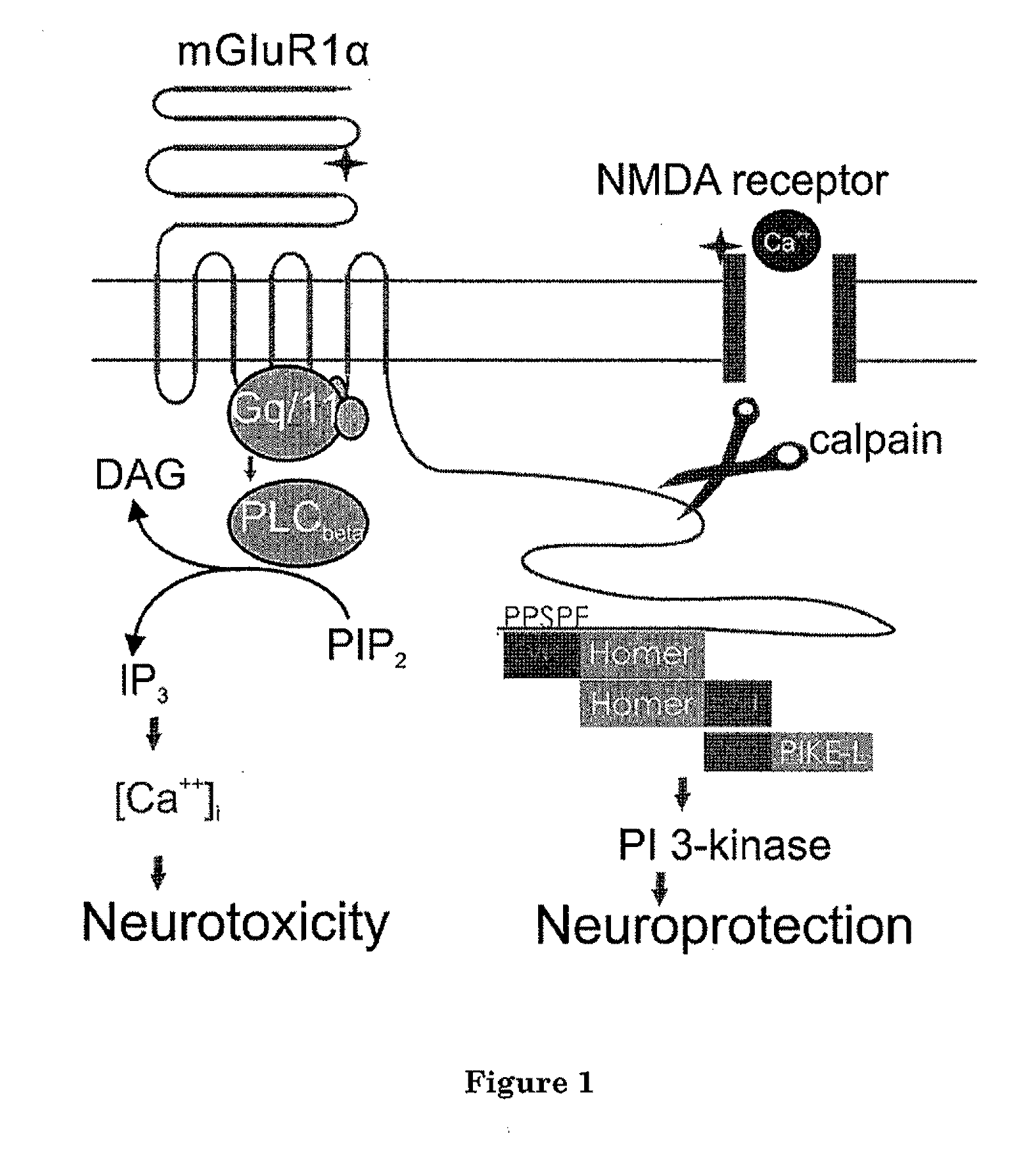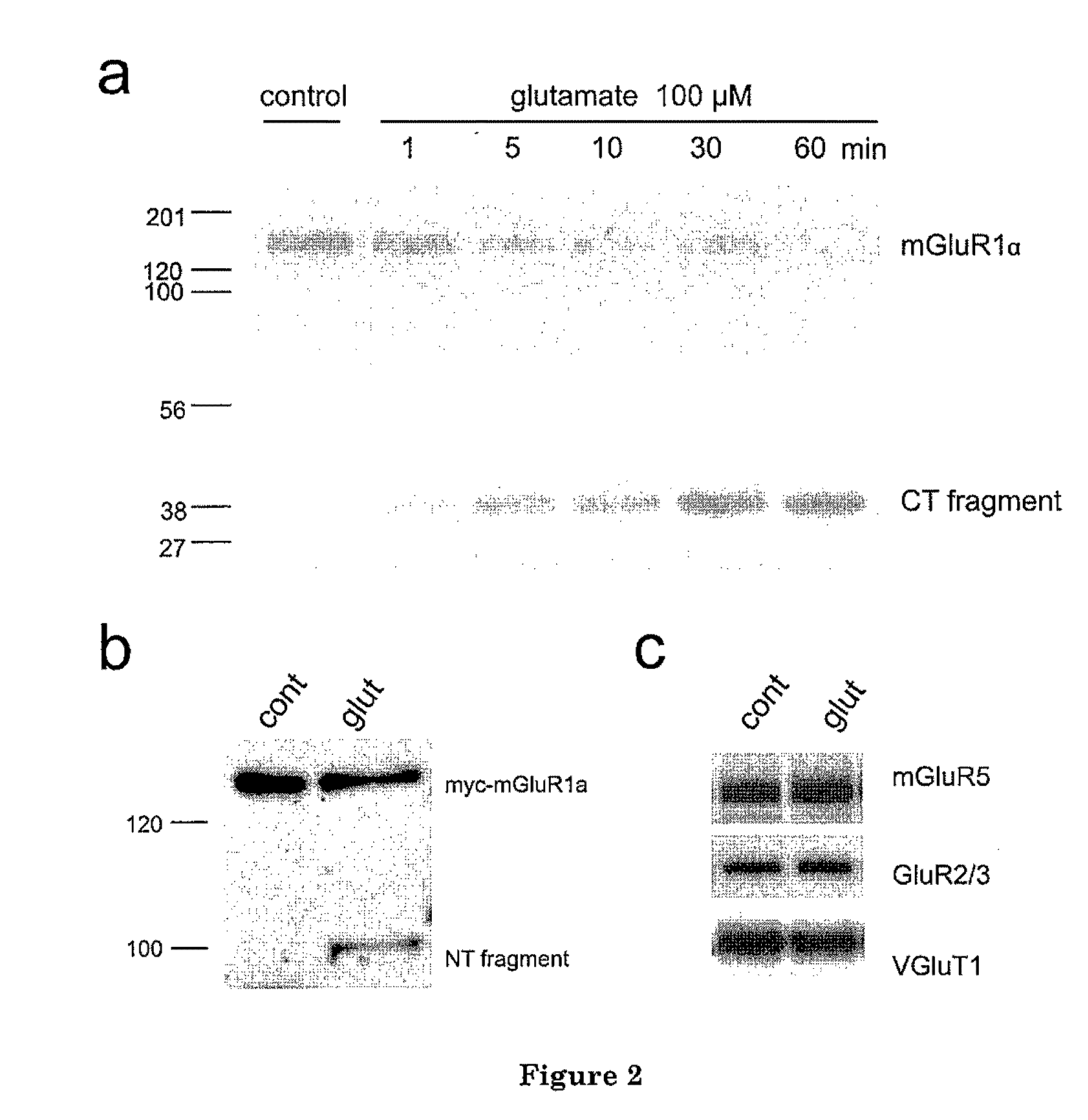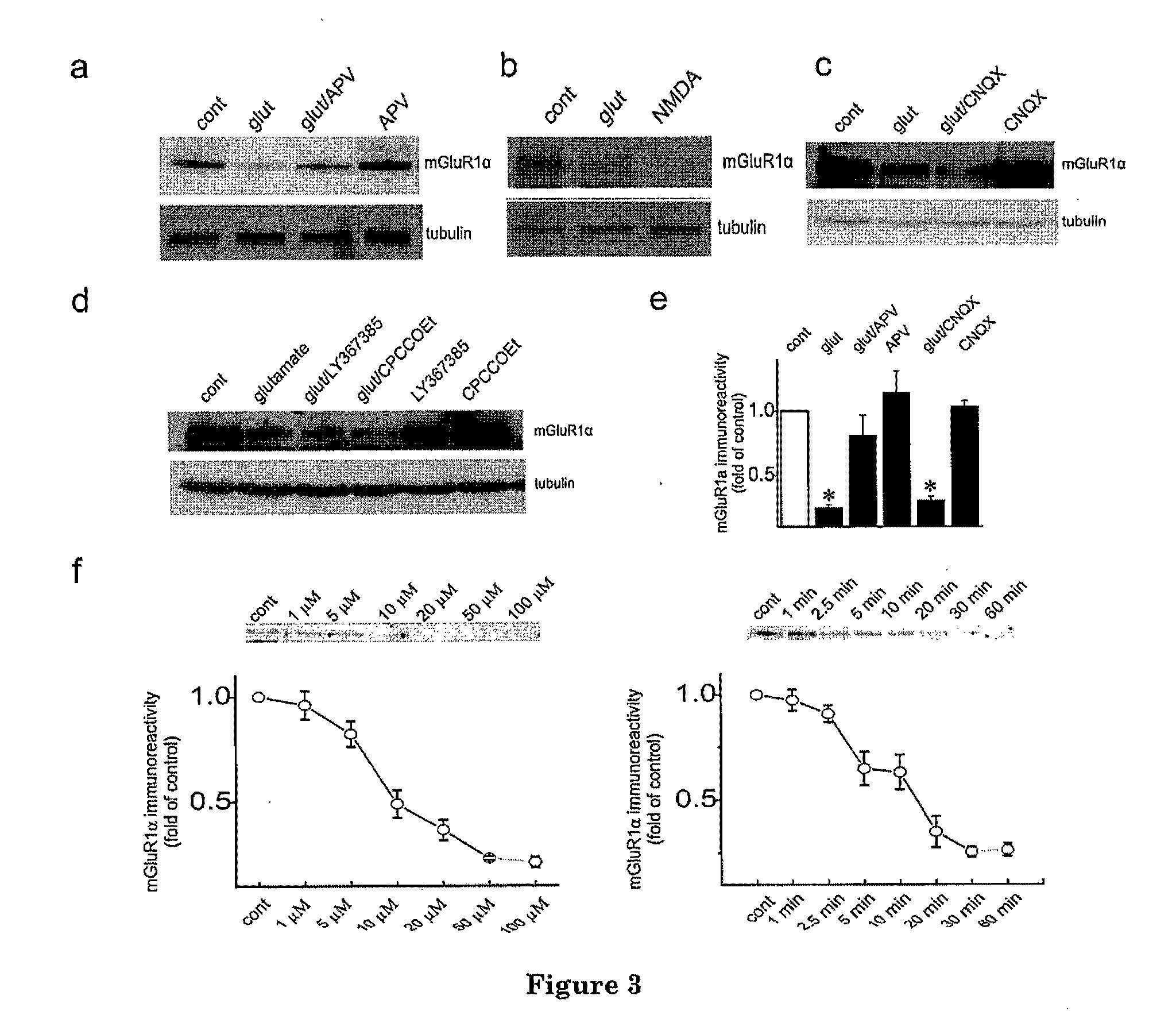C-Terminal Domain Truncation of mGluR1a By Calpain and Uses Thereof
a c-terminal domain and calpain technology, applied in the field of neurodegenerative disorders and neurological injuries, can solve the problems of reducing blood flow to inadequate levels, lacking efficient pharmacological treatments, irreversible damage to various cell structures,
- Summary
- Abstract
- Description
- Claims
- Application Information
AI Technical Summary
Benefits of technology
Problems solved by technology
Method used
Image
Examples
Embodiment Construction
[0038]As noted above, most attempts at treating neurological injuries and neurodegenerative diseases have thus far been unsatisfactory. One reason for the difficulty is that most NMDA receptors antagonists or calpain inhibitors can not efficiently cross the blood-brain barrier to reach the intended targets. Even if an inhibitor / antagonist can cross the blood-brain barrier, direct inhibition of NMDA receptors or calpain almost invariably causes many side effects because these targets may be involved in many other metabolic / regulatory pathways other than excitotoxicity. By blocking these targets, other normal cellular functions may be undesirably affected.
[0039]The present invention is based at least in part upon the unexpected discovery that activation of NMDAR induces calpain-mediated truncation of mGluR1α at Ser936 of its C-terminus. The truncation, in turn, disrupts the neuroprotective mGluR1-PI3K-Akt signaling but keeps the neurotoxic PLC-Ca++ releasing pathway functional. The ne...
PUM
| Property | Measurement | Unit |
|---|---|---|
| time | aaaaa | aaaaa |
| time | aaaaa | aaaaa |
| time | aaaaa | aaaaa |
Abstract
Description
Claims
Application Information
 Login to View More
Login to View More - R&D
- Intellectual Property
- Life Sciences
- Materials
- Tech Scout
- Unparalleled Data Quality
- Higher Quality Content
- 60% Fewer Hallucinations
Browse by: Latest US Patents, China's latest patents, Technical Efficacy Thesaurus, Application Domain, Technology Topic, Popular Technical Reports.
© 2025 PatSnap. All rights reserved.Legal|Privacy policy|Modern Slavery Act Transparency Statement|Sitemap|About US| Contact US: help@patsnap.com



